Os alto-falantes do carro tendem a quebrar ou se desgastar com o tempo. Isso é especialmente verdade considerando o tipo de alto-falantes OE (equipamento original) de baixa qualidade que vem com a maioria dos carros.
No entanto, quando um dos alto-falantes não está funcionando em um lado, é errado supor que o alto-falante é o problema. Isso porque existem vários componentes antes do alto-falante do carro, e qualquer um deles pode ser a causa do problema.
Aqui está um procedimento simples para testar seus componentes de áudio para diagnosticar o problema e saber como corrigi-lo. Essas correções também funcionam para problemas em que os alto-falantes frontais do carro não estão funcionando.
(Se os alto-falantes traseiros do carro não estiverem funcionando, consulte este guia para correções. Se os alto-falantes do carro estiverem abafados, você precisará deste guia. Se os alto-falantes estiverem funcionando, mas o sub não estiver funcionando, verifique este guia.)
Diagnosticando o problema
Para este artigo, vamos supor que o sistema do seu carro tenha um amplificador de dois canais, um crossover, uma unidade principal e dois alto-falantes de porta - com apenas o alto-falante esquerdo funcionando e o alto-falante direito não funcionando.
Como tal, você deve certificar-se de que o alto-falante é a raiz do seu problema antes de removê-lo. Isso é especialmente se os alto-falantes estiverem atrás dos painéis das portas.
Teste de problemas de alto-falante
Para começar a testar o problema, desligue o veículo e o sistema estéreo do carro antes de desconectar os fios dos alto-falantes dos dois alto-falantes (direito e esquerdo) do amplificador.
Agora conecte seu alto-falante direito à saída do amplificador esquerdo (que você sabe que funciona). Depois disso, ligue o estéreo e certifique-se de que o equilíbrio esteja na posição intermediária.
Se o alto-falante não estiver funcionando, o problema pode estar em qualquer lugar entre o próprio alto-falante e o amplificador.
Pode ser um alto-falante ruim, os fios do alto-falante ou qualquer outro componente nas conexões de fiação.
Além disso, se seus alto-falantes tiverem um crossover passivo entre cada alto-falante e o amplificador, isso também pode ter um problema.
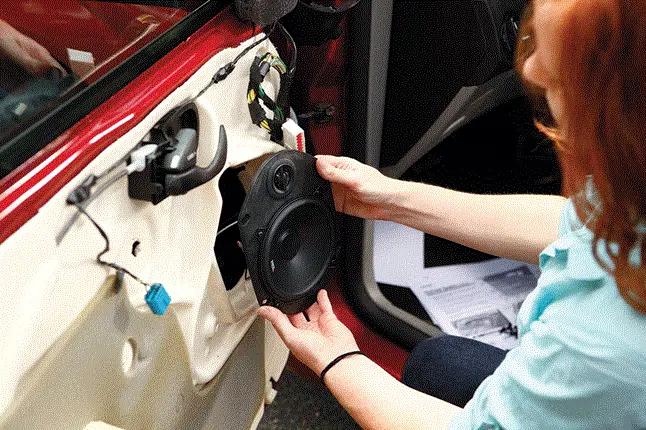
Neste ponto, você precisará retirar o alto-falante da porta e usar fios temporários curtos para testá-lo em seu amplificador.
Dessa forma, você pode testar os alto-falantes e também verificar se há fiação ruim ao mesmo tempo. Isso significa que, se o alto-falante funcionar com os novos fios, o problema está na fiação antiga - nesse caso, a instalação de novos fios resolverá seu problema.
No entanto, se o alto-falante funcionar quando conectado ao outro canal do amplificador, o problema não é o alto-falante. Nesse caso, você precisará desligar o sistema estéreo e testar os outros componentes.
Verificar continuidade
Se os alto-falantes do carro estiverem montados dentro dos painéis das portas, o espaço onde os fios passam entre a moldura da porta e a porta pode ser um ponto de falha.
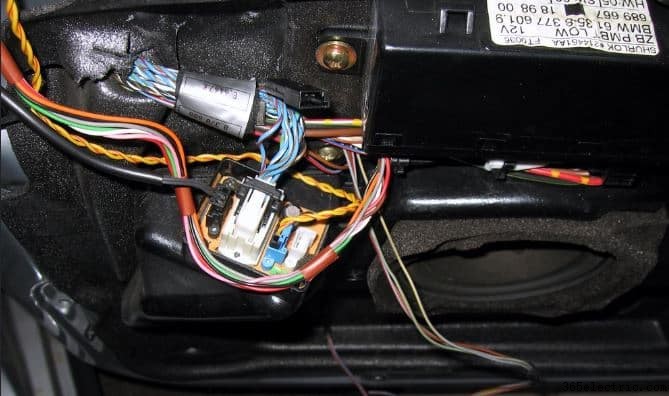
Embora os chicotes de fiação sejam normalmente vedados com bainhas de borracha dura para proteção, eles tendem a quebrar com o tempo. Isso se deve principalmente ao estresse repetido ao fechar e abrir as portas.
Dito isto, você pode querer verificar a continuidade de seus fios com a porta aberta e fechada.
Se os fios não tiverem continuidade, isso significa que você tem um fio quebrado em algum lugar. No entanto, se você notar continuidade no terra, então você tem um fio em curto e essa pode ser a causa do seu problema. No entanto, você ainda precisa testar outros componentes se os fios estiverem bem.
Eliminar um problema de amplificador
Se o seu alto-falante não estiver queimado, você precisará verificar seu amplificador também. Por exemplo, alguns amplificadores entram no modo de proteção quando o volume é aumentado. Caso contrário, você precisa verificar se o canal do amplificador está ruim, especialmente se todos os alto-falantes estiverem conectados a um amplificador.
Para fazer isso, coloque cada alto-falante em seu respectivo canal – o alto-falante direito no canal direito e o alto-falante esquerdo no outro.
Lembre-se de que o som do veículo deve ser desligado enquanto você conecta os fios.
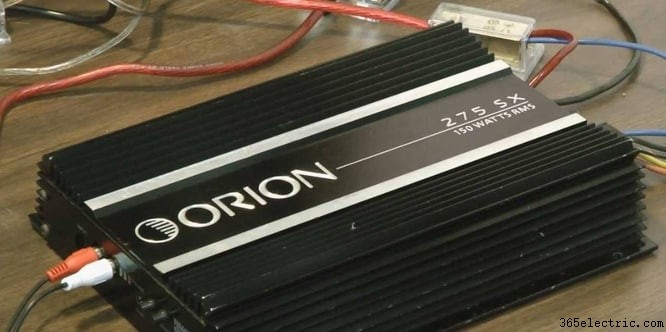
Quando a fiação do alto-falante estiver de volta à sua configuração original, remova os cabos RCA do amplificador e troque-os. Isso significa que o cabo direito deve ser conectado à entrada esquerda e vice-versa, antes de ligar o sistema estéreo do carro.
Se o alto-falante direito ainda não funcionar e o esquerdo funcionar, você pode começar a suspeitar que o problema está no seu amplificador.
Isso porque você eliminou os componentes antes e depois do amplificador. Como tal, se o problema estava passando pelo lado direito do seu sistema, ele deveria ter sido mostrado no lado esquerdo quando os cabos foram trocados. Neste caso, peça a um técnico de reparo profissional para verificar o amplificador.
Se o alto-falante direito estiver funcionando após o interruptor e o esquerdo não, isso indica que o problema está em qualquer lugar antes do seu amplificador.
Também mostra que o problema está no lado direito do seu sistema, pois o problema mudou com o interruptor do cabo. O problema pode ser os cabos ou outros componentes no canal certo. Desligue o estéreo e conecte os cabos RCA na configuração original.
Testando a conexão do cabo RCA
Para quaisquer componentes entre a unidade principal e o amplificador, siga estas etapas para testar cada um. No nosso caso, apenas um crossover está presente, então só precisaremos fazer isso uma vez.
Comece verificando os cabos RCA que conectam o componente intermediário ao seu amplificador. Aqui está um guia passo a passo:
- Desconecte os cabos RCA da saída do componente
- Conecte o cabo RCA do alto-falante que está funcionando ao lado que não está funcionando do crossover do seu carro. Neste caso, o canal esquerdo é o lado de trabalho, então conecte o cabo RCA esquerdo ao lado direito do crossover.
- Ligue o sistema estéreo do seu carro
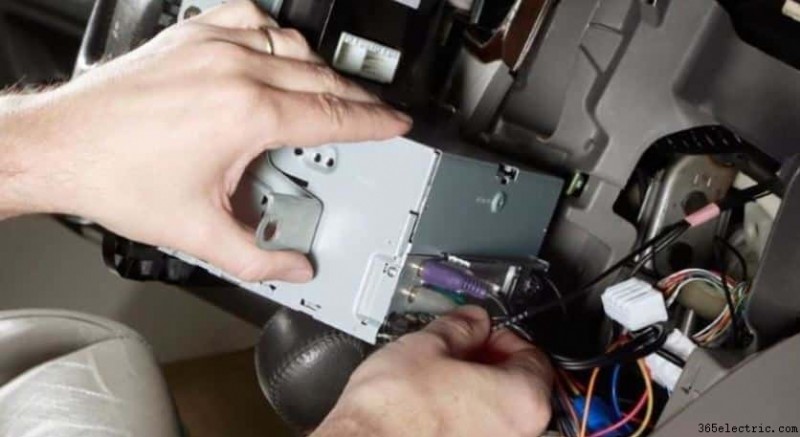
Se o canal esquerdo continuar funcionando, você deve saber que os cabos RCA entre o crossover e o amplificador são o problema.
No entanto, se o alto-falante esquerdo não estiver mais funcionando, o problema não são os cabos RCA. Você pode verificar isso desligando o sistema de áudio e conectando o cabo RCA direito do seu amplificador à saída RCA esquerda do seu crossover antes de ligar o estéreo novamente.
Se os cabos RCA não estiverem danificados, você terá saída de áudio do alto-falante direito. Você também deve garantir que não pule o processo de verificação, pois é possível que o problema exista no cabo e em outros componentes.
Além disso, certifique-se de desligar o estéreo e restaurar a conexão original dos cabos RCA após concluir o teste.
Verificando se há um problema de equalizador ou crossover
Sempre que você se encontrar em uma situação em que um alto-falante estéreo não esteja funcionando, é importante definir o crossover e a fase corretos em seu subwoofer.
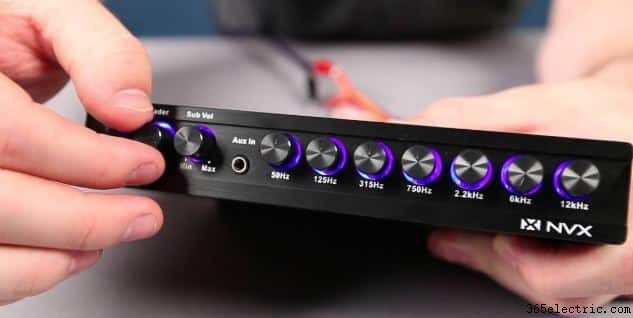
At the intermediate component’s input (the crossover in this case), interchange the RCA cables – the right to the left input and vice versa – and switch on the audio system.
If the left channel continues working and the right channel doesn’t work, then the intermediate component is the problem. In that case, consider repairing or replacing the component.
If the problem shifts to the left speaker and the right speaker is now working, then that shows the crossover isn’t the problem. In that case, consider checking the components before the crossover. But first, turn off the stereo and fix the RCA cables to the original configuration.
Testing The Head Unit
Most people will easily conclude that the speaker is the problem if the head unit is turning on fine, but they don’t get sound from any of the speakers.
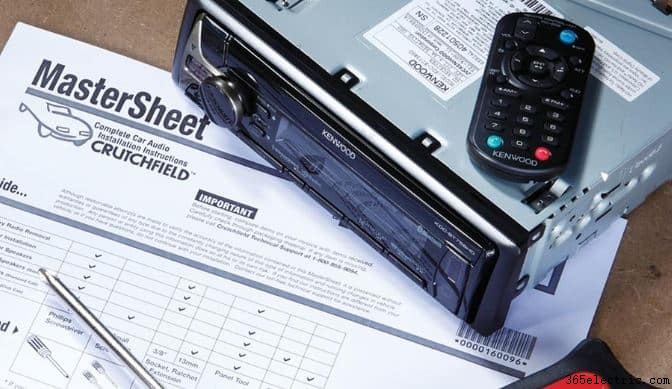
However, that’s not always the case. The fact that your head unit is switching on doesn’t indicate that it’s working properly.
For that, you’ll need to do some tests to rule it out. But before you do that, here are some things you’ll want to do:
- Verify that your head unit is not in anti-theft mode which requires a vehicle radio code
- Test different audio inputs such as CD player, radio and auxiliary input, to name a few
- Check the fade, pan, and volume settings
- Check for unplugged or loose wires
- Test any onboard switches
How To Test The Head Unit
Start by taking out the head unit from your dashboard to get access to the RCA cables.
After that, unplug both cables from the unit and be careful not to disconnect any other wires. Take the left cable and plug it to the right channel of the unit and turn the system on.
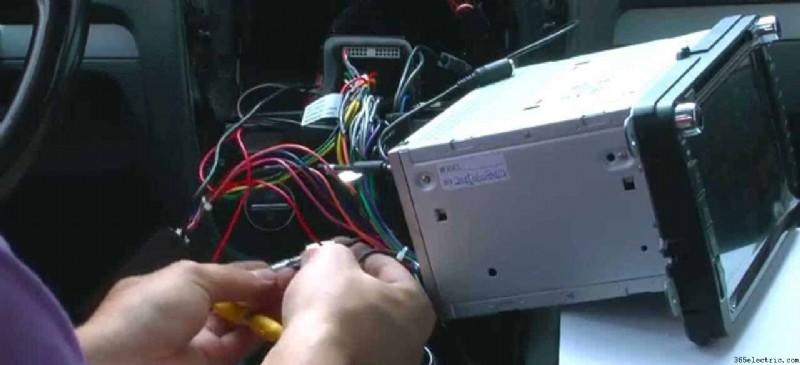
If the left speaker is still working, then the problem isn’t in the head unit. That shows the problems is in the cables connecting the head unit with the intermediate component (if your car has one) or the amplifier.
You can confirm that by switching off the stereo system to unplug the left RCA cable and plug in the right RCA cable to the left stereo output. The speaker will not give any output, indicating that the RCA cable is faulty.
However, if the left speaker stops working after plugging it on the right channel, then your head unit has a problem.
You should confirm this by switching off the stereo, unplugging the left RCA and fixing the right RCA cable on the left output of your system.
The right speaker should start working when you turn on the audio system, but if it doesn’t, then it shows you have a faulty RCA cable and a spoilt head unit. That’s rare, but not entirely impossible. If the head unit is faulty, you can easily pick up a good one here.
How Can You Tell if a Car Speaker Has Been Blown?
One of the easiest ways to tell if a car speaker has been blown is by listening.
If you turn your music up in one direction and it sounds distorted, there’s a good chance that the speakers have gone bad.
Another way to detect this issue is when trying to call someone on Bluetooth or through CarPlay while driving.
Neither connection will work because only one side of the audio system needs power for them both to function properly.
Additionally, clicking noises are often heard when opening doors, turning off/on lights inside of the vehicle, starting the ignition, etc.
This also indicates blown speakers on at least one side.
How Much Does It Cost to Get Car Speakers Fixed?
It will cost between $500 and $1,000 to replace your existing speakers with a new set.
The most common cost range for car owners is $300 to $800. A good-quality audio system might cost anywhere from $500 to $1,000 more than a high-performance music system.
Are Speakers Worth Repairing?
Yes, some speakers are worth repairing while others aren’t. Some speakers are worth repairing if their sound is only slightly distorted.
But others aren’t because of the amount that would have to pay for speaker repairs or how difficult it could be depending on what needs repairing.
Why Are My Car Speakers Only Playing On One Side Using Bluetooth?
It’s possible that you mistakenly set the balance on your Bluetooth device to the full-right position or full left position.
If this is the case, you’ll need to make some adjustments to the Bluetooth connection on your phone to resolve the problem. To do this, go to Settings>Bluetooth and switch it back to left-handed mode. If you are using a stereo, just adjust the balance to the middle.
If you’re still having this issue, likely, your car speakers are not compatible with Bluetooth. To fix this, you’ll need to either switching your car speakers over to using stereo mode or re-pairing them.
Why Is My Car Speakers Only Playing On One Side Using Aux
It may be because you have set the balance on the stereo to the full right or full left position. In this case, set the balance to the middle. On the other hand, it may be because your car speakers are not connecting to your Auxiliary Output.
If your car speakers don’t connect to aux, they will not play sounds from those other devices. You can fix this issue by disconnecting the aux cable from your audio system and reconnecting it again.
It may also be because the other side of the aux audio jack is broken. If one of your Auxiliary Audio jacks isn’t working, it means that either one or both of your AUX ports are broken.
This can be a considerable inconvenience, as you’ll need to find a way to plug in your headphones and listen to music from your car stereo on the other side of the aux cord.
Why is My Driver’s Side Speakers Not Working?
It may be because you have set the balance on the stereo to the full right or full left position. In this case, set the balance to the middle. It may be because there is an issue with your speaker wire or there is a bad connection.
Your speakers can be damaged by the constant movement of the car or just mishandling. It’s important to remember to connect your speaker wires properly to get the best sound from your car.
Make sure that you have the correct speaker wire and connectors for your car to fix this issue. Next, test the speakers by plugging them into an audio source and listening to music. If they work correctly, you should replace the driver’s side speakers.
What is The Car Speaker Fuse Location for the Car Radio?
For most cars, you will find the fuse panel at the side of the driver’s dashboard. You can also find it under the dashboard or beneath the vehicle hood.
Why Is the Right Side Car Speakers Not Working?
It may be because you have set the balance on the stereo to the full right or full left position. In this case, set the balance to the middle.
Sometimes, this is due to a problem with the speaker itself, but other times it may be due to a problem with the audio connection. In either case, it’s essential to investigate the issue and find out what can be done to fix it.
There are a few things you can do to troubleshoot and fix your right side car speakers:
- Make sure you’re using the correct type of speaker for your vehicle. Some vehicles have two different types of speakers- one on the front and one on the back. Make sure you’re using the correct type of speaker for your vehicle.
- Check for any obstructions in your audio system, such as dust, hair, or other debris. Sometimes these objects can cause sound problems when played back through a speaker.
- Try changing out the audio cable if it’s been damaged or has had too much use. This can help fix any audio issues that may be happening with your speaker system.
Why Has My Front Car Speakers Stopped Working?
One possibility is that the speaker drivers may have been damaged. It could also be that the audio system was not correctly installed or checked when it was new.
A defective circuit board can also cause your front car speakers to stop working, and in some cases, permanently.
If you have a circuit board defect in your front car speakers, you may not be able to hear the music or sound from the speakers. Additionally, if you experience any feedback or problems with the audio, you may need to replace the entire speaker assembly.
If any of these factors are true, you should contact a professional to check out the speakers and see if they need to be replaced.
Why Is My Car Speakers Not Working But Subwoofer Is?
If the speakers in your car are not working but the subwoofer is working, this may be due to the following issues:
- The amp is not getting enough power
- RCA cables not connected properly
- Speaker wires are not connected properly
To learn more, check out our article on why my car speakers are not working but the subwoofer is working.
Conclusão
So there are the fixes whenever you find your car speaker not working on one side. These fixes will also work when the front car speakers are not working.
There you have it, that’s the troubleshooting procedure that most technicians use to fix the stereo system whenever such a problem occurs.
It may require some time and a few basic skills, but its worth a try if you don’t want to take your car to a technician. However, you should consider calling in a professional audio expert if you still can’t diagnose the problem after following the testing procedure above.






